Hearing Aids
Hearing aids are not something people aspire to. We grow up looking forward to buying our first car or home but no-one really wants to buy their first hearing aids. Hearing aids are a grudge purchase, largely due to the misconceived stigma which suggests they are for old people. Hearing aids are grossly misjudged by almost everyone that doesn't understand their real benefits, or has preconceived ideas of what they represent.
Whilst a hearing loss is classed as a disability, it doesn't have to affect your day to day life in a significant way, if you do something about it.
Scroll down to get more information on hearing aids, such as what they are, what they look like, the different types of technology and where you can get hearing aids. Alternatively you can read more about the major UK hearing aid brands here.
But if you've reached the stage where you can no longer put it off, and you are ready to both accept and wear hearing aids consistently, then what are the other things to consider before buying hearing aids.
A hearing aid is a device designed to help you hear better when your hearing has become impaired. You can get more information on what causes hearing loss here. The earliest example of a hearing aid is an ear trumpet.
How well do hearing aids work?


Early hearing aids had 3 main components, a microphone, an amplifier and a receiver (speaker). Whilst they amplified sound, they made all sound louder so weren't very effective in background noise.
Over the years other components called potentiometers were added to allow small adjustments to different types of sound meaning unwanted sounds could be reduced by the hearing aid but the effect was quite limited.
With the technological advances the 1990s saw the birth of digitally programmable hearing aids and then fully digital hearing aids.
Todays hearing aids are more like mini computers and with the addition of micro chips and micro processors they can now make millions of sound calculations in seconds. This means the sound picked up by the microphone(s) can be altered inside the aid so that the sound produced in the ear canal is very closely matched to compensate for the hearing loss at different frequencies. Different manufacturers have devised their own amplification strategies and algorithms so hearing aids which look very similar, may in fact sound very different. The hearing aids that are best suited to an individual will be determined by a number of factors which the hearing care professional should discuss with you at the hearing assessment.
What are hearing aids?
Licence: Public Domain Mark
There are a number of factors that will govern how well a hearing aid works including but not limited to:
the extent of the hearing loss and thus the natural ability of the wearer i.e. does the wearer have impaired cognitive function or not enough hearing ability to invoke a response in the ear
the willingness of the wearer to actually wear the hearing aids. To work effectively the hearing aids should be worn as much as is possible, which keeps the brain adapted to the sounds around them. Sporadic wearing doesn't work effectively
is the technology level of the hearing aid sufficient to deal with the wearers lifestyle i.e. a basic hearing aid will not deal with a challenging lifestyle containing lots of background noise
is a hearing aid on its' own sufficient enough to deal with the wearers needs or even physical abilities. Sometimes the addition of a wireless or bluetooth device, or the use of an app on a smartphone, can significantly boost the hearing aids performance or the wearers ability to use the aids more effectively
how well fitted are the hearing aids both in terms of physical fit and the methods used to verify the fit and programming of the aids such as feedback checks, real ear measurements and in-situ audiometry
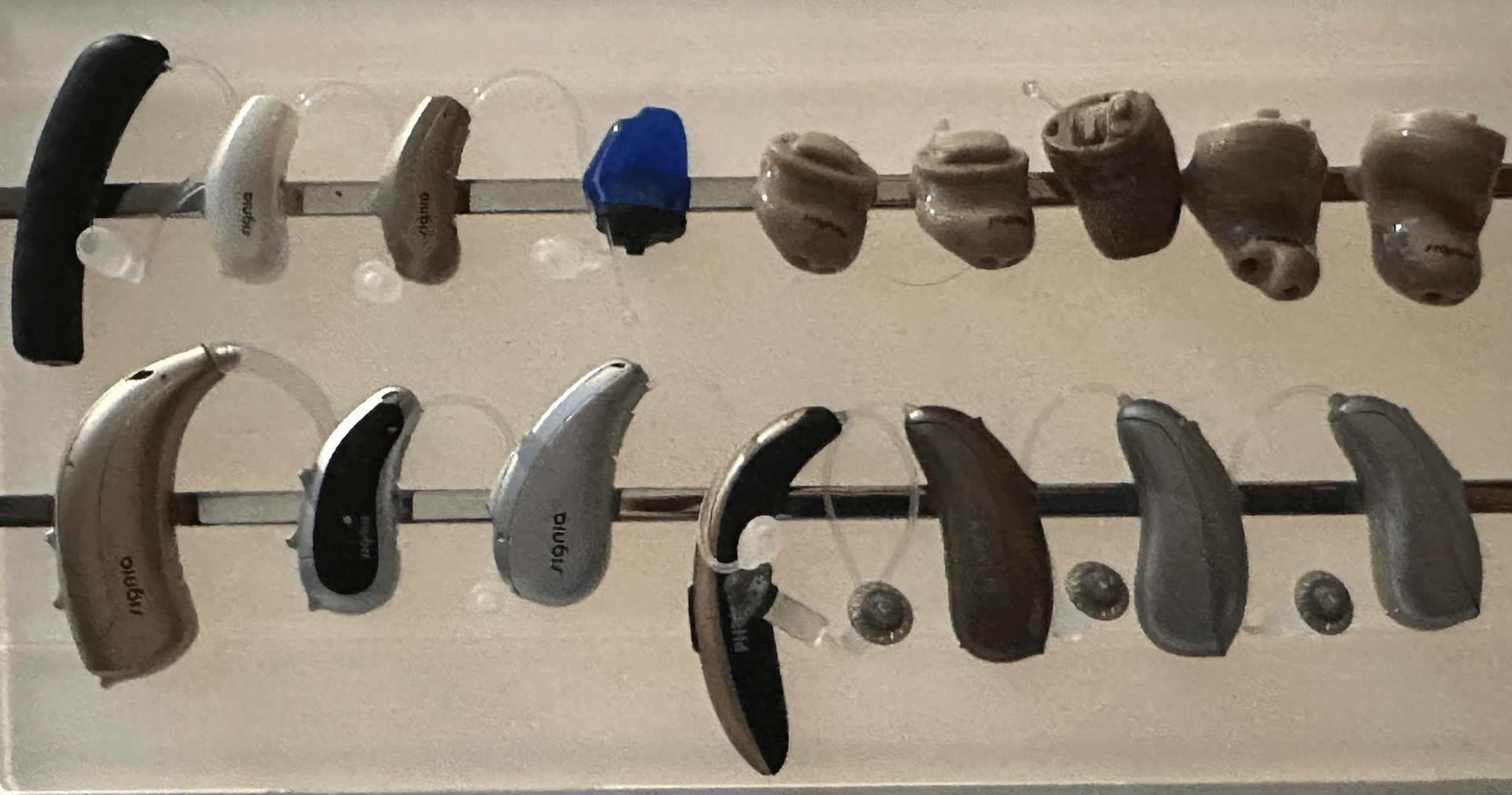
Developments in technology or the internal configuration of hearing aids is where the main differences between manufacturers occur. How hearing aids look is less variable with only slight differences in design from one manufacturer to another. Custom made hearing aids vary less in design than the on the ear or behind the ear models but the main visible components will look fairly similar from one manufacturer to another.
Size Is Everything
If you have reached the stage where you accept you need hearing aids, and are considering which style to go for, it's important to remember that the smaller a hearing aid is, the less functionality it may have. In a minority of cases this won't pose any issue, but in many cases, the loss of certain functions will make the hearing aids unable to deal with the lifestyle requirements of the wearer. My experience is that when someone is considering their first hearing aids they will often consider size above all else and want the smallest and most cosmetic option, even if it isn't the most suited to their hearing loss and listening needs. This approach is ok if it gets you to start wearing hearing aids, but will cost you more in the long run as your listening needs overtake your cosmetic needs, and you need to replace your first hearing aids with something more appropriate to your hearing loss and lifestyle.
What are the differences between manufacturers?
Hearing Aid Styles

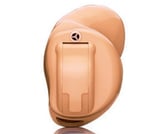

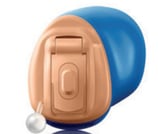

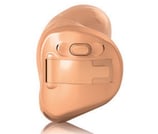

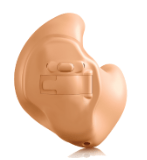

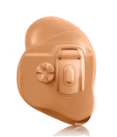
Invisible in the canal ( IIC )
A CIC aid sits fully in the ear canal with only the faceplate visible on the outside. Suitability is again restricted by the size and shape of the ear canal and it won't be suitable for every ear.
A MIC aid may be used where IIC or CIC aids are not suitable but the wearer still wants a small solution. Once again the eventual size will be dictated by the size and shape of the individual ear.
an ITC aid or HS aid fill more of the lower portion of the outer ear. ITCs are usually used where more the clients ear size doesn't allow smaller sizes and HS aids are used when the client wants a custom option but more power is required, or where the wearer prefers not to have an on the ear or behind the ear option, or has more limited dexterity for handling the smaller aids.
This is the same as an on the ear RIC aid (above) but the design of the hearing aid is different. The outer casing is longer and slimmer and is slightly contoured to the shape of your ear. This can make it more discreet, or it could in some cases, fit better with spectacles.
An OTE slim tube aid is a behind the ear hearing aid with a very thin hollow tube which directs sound from the receiver (speaker) of the hearing aid into the ear canal. They can be used with instant fit domes or with custom made moulds.

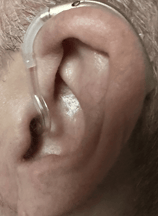

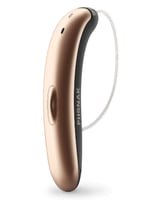

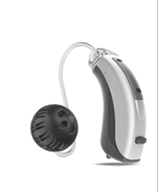

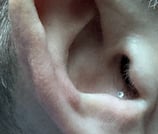

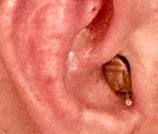



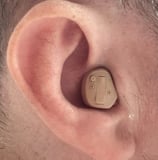
With a RIC aid the receiver (speaker) has been removed from the main body of the hearing aid and placed in the ear canal, connected by a small electrical wire. They can be used with instant fit domes or with custom made tips.

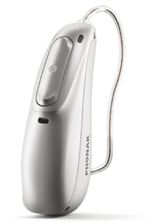
What do hearing aids look like?

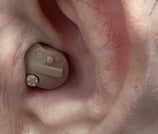

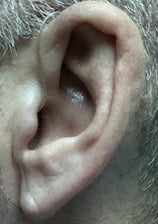

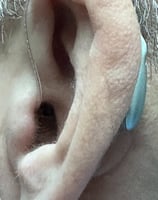

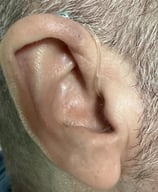

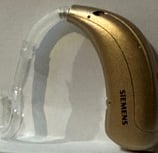
An IIC aid is the smallest custom made hearing aid. It sits deep in the ear canal but suitability is limited by the size and shape of the individual ear canal so may not actually be invisible.
A FS aid also sits in the top part of the outer ear which usually makes it more secure in the ear. As it seals more of the ear it can help reduce the risk of feedback where more power is required and will usually be the easiest to handle of the custom made hearing aids.
This style of hearing aid has a custom mould with a thick hollow tube directing sound into the ear canal. It isn't as commonly worn by adults these days unless their hearing loss is severe or profound and needs high powered aids. It is the style most often fitted to children's ears which are constantly growing and requiring a change of earmould to fit correctly.


conventional hearing aids
Full Shell (FS)
Invisible in the canal ( IIC )
Receiver in the Canal (RIC)
Invisible in the canal ( IIC )
Slim Receiver in the Canal (SRIC)
In the Canal (ITC) or Half Shell (HS)
On the Ear Mini slim tube BTE (OTE)
Behind the Ear (Standard tube BTE)
CROS systems are used when a person has one ear that is dead or considered unaidable, and the other ear is normal. A transmitter picks up sound at the dead or unaidable ear and transmits it to a receiver worn on the better ear. They enable all round hearing but they are limited by the fact you still hear everything through the better ear so you don't have binaural summation. In the past these systems required a wire to connect the two devices on the ears but modern wireless systems have overcome this need. They range from behind the ear such as the on the ear RIC style which is more effective for the transmission of information between the devices when worn, but can also be in the ear for some sizes.
Bi-CROS systems are similar to CROS systems but are used when a person has one ear that is dead or considered unaidable, and the other ear has a treatable hearing loss. A transmitter picks up sound at the dead or unaidable ear and sends it to a hearing aid worn on the other ear. They enable all round hearing but they are limited by the fact you still hear everything through the better ear so you don't have binaural summation. In the past these systems required a wire to connect the two devices on the ears but modern wireless systems have overcome this need.
Bone Conduction Aids
Surgical Options
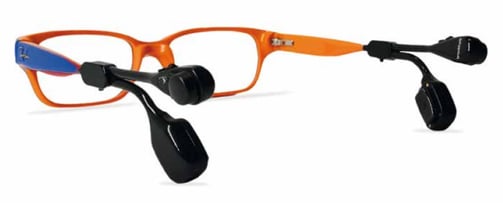

Spectacle aids place the hearing aid into the arms of the spectacles and may use vibrating pads placed on the bone behind the ear, or have a small tube or receiver wire directing the sound into the ear canal. They have limitations for people who perhaps don't wear spectacles all the time or have different spectacles for driving or reading for example.
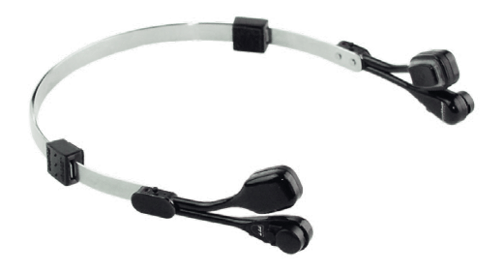

Specialised or less conventional hearing systems
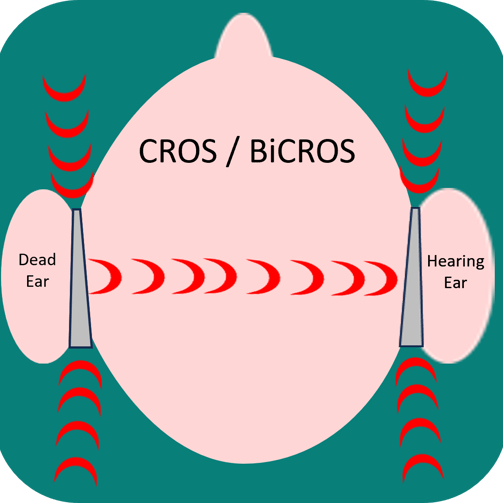

Bone conduction aids don't play sound via the ear canal but vibrate sound through the thick bone behind the ear, directly into the inner ear. They are usually used if conventional hearing aids aren't suitable, such as if your ear canal is malformed, If your inner ear has good functionality they may work well but may be less suitable if your inner ear is impaired.
Spectacle Aids
For extreme cases where no other type of hearing aid may be effective, such as in cases of microtia or atresia (where the outer part of the ear or the ear canal haven't formed properly), an ENT (audiology) specialist may recommend a surgical solution, such as a bone anchored hearing aid (BAHA) or a cochlear implant. You still need to be a suitable candidate for these devices to work effectively and they are still an expensive option so aren't commonly or routinely available everywhere on the NHS. If you are suitable then you can discuss surgical options with an ENT consultant. It has been more common for these devices to be fitted to children to aid their ability to hear, communicate and develop educationally, but adults are fitted with them, even some who have not heard since early age, or have never heard before.
Contralateral Routing Of Sound (CROS)
Bilateral CROS (Bi-CROS)


Photo Credit: Zoe Graham on Unsplash
There are a number of ways you can access the provision of hearing aids in the UK. There are pros and cons with most methods of accessing hearing care provision so it's always a good idea to think about which option works best for you.
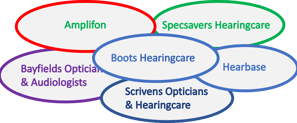





Although high street providers claim to have certain standards, you may find that the service you receive from one branch to another is in fact very different, with one branch doing some tests whilst another branch does not, or one branch having a soundproof booth whilst another shares a room with an optician, and tests are conducted in a noisy setting. This could have a significant influence on the results of your test and subsequently any hearing aid fitting. Some of the high street providers in the hearing care sector create the illusion of choice. In fact many of them are financially tied to a parent company who prefers that the brands of hearing aids they own are promoted over the aids of other manufacturers. Some high street providers may have more than one brand on their price list but in reality, 2 or 3 of those brands may be owned by the same parent company. This is shown quite clearly in this map produced by The Hearing Tracker Inc which highlights that only a few parent companies own most of the worldwide hearingcare brands. As you can see, the choices presented to you may be more limited than you are led to believe by some high street providers.
It is not uncommon for hearing aid dispensers to be paid a commission or bonus based on the value of any sales they make. The more sales they make, the bigger the bonus. This incentivises sales of more expensive hearing aids, even if they may not be required for an individuals' listening or lifestyle needs. Yes it's true, you will generally hear better with the more advanced hearing aids, but you may hear perfectly adequately with less advanced technology. Whilst the majority of hearingcare companies still pay sales commission or bonus, some independent suppliers have switched to paying their staff a professional salary and have removed the commission or bonus element altogether.
Some independent suppliers are also financially linked to certain manufacturers by way of the manufacturer having loaned money to the dispenser to help set up their business or fit out their premises. In return the hearing aid dispenser is incentivised to sell a certain amount of that manufacturers hearing aids. That being said, there are many excellent independent hearing care companies who offer a wide choice and provide excellent service and aftercare.
Also with most private providers the price of the hearing aids will include a large amount for future aftercare appointments and services. You have no choice in paying this as it is included as a package sold with the hearing aids. This means that hearing aids can vary from £1395 to £5000+ per pair. Some independent suppliers do charge separately for aftercare beyond an initial free period and you will find that they are very open about their pricing and the services they offer. I personally am very cautious about any company, hearing care or otherwise, that is not open and transparent with their pricing.
Unless your hearing aid provider has their own car park, every appointment has extra costs such as congestion or ULEZ charges, ever increasing parking fees (along with the inconvenience of finding spaces, needing an app to pay), and possibly incidental spending when visiting the high street, it all adds on to the original price of the hearing aids over time.
NHS provision is variable from one area to another and you need a referral from your GP to access the service.
NHS hearing aids are free of charge but some health authorities place restrictions on who is eligible., such as age, or degree/extent of hearing loss. You have little or no choice in which hearing aid(s) you get and the technology is generally older than what you can get privately. That being said, NHS hearing aids will work perfectly well for some people, dependent on their listening needs. NHS aids remain the property of the NHS, not the wearer and you can only get them repaired, replaced or serviced at authorised NHS centres.
Waiting lists are growing for hospital appointments in the southeast, including audiology, and It’s almost impossible to access NHS audiology services in a domiciliary setting.
With Ear Health Matters Ltd I believe that all clients should get the required level of service necessary to ensure that the advice given is appropriate to their circumstances. I don't want my clients to feel that appointments have been rushed or that their care feels incomplete. I will conduct as many tests as are necessary to ensure the explanation of the results, and the solutions offered will be tailored to the individual needs of each client, whether that be no further treatment necessary, medical referral required or fitting hearing aids.
Also I haven’t taken loans to try to build the business but instead bought equipment and expanded my services as and when the business could afford them. Therefore I am truly independent allowing me the option to recommend whichever manufacturer’s hearing aids I feel are best suited to my clients’ needs, meaning you have real choice.
I wanted my clients to have another choice. With most hearingcare companies you are charged extra for your future aftercare and you have no choice whether or not you pay this, even if you end up not taking advantage of the aftercare. With modern hearing aids being more resilient to moisture and being more reliable mechanically, many people have reduced their need for 6 month check ups, yet still pay for them as it's factored in to the hearing aid price. That's why our pricing doesn't include future aftercare beyond the period where your hearing aids are fitted and you are happy with them, which usually takes from 6-8 weeks if you are a new wearer. If you would prefer to pay more for an inclusive aftercare package then we are happy to discuss a personalised aftercare plan with you at your hearing assessment. Rest assured you will always get the best advice regarding which solution fits your listening needs and the same high level of aftercare service regardless of how much your hearing aids cost and whether or not you have an all inclusive aftercare package or choose the pay as you go option.
Add into this the fact that this will all be done in the comfort of your own home so you won't incur motoring costs or other incidental costs. I also live locally to the areas I work so you won't have to wait for days or weeks for an appointment to be seen (out of hours appointments may be possible by mutual agreement).
With a copy of your audiogram (hearing test results) you are able to buy hearing aids online. The hearing aids are often advertised as being much cheaper but in the longer term can end up costing you more due to:
without Real Ear Measurements or In-Situ audiometry the hearing aids effectiveness is likely to be lower than it could be with a fitting based on the audiogram data alone.. The first fitting of any hearing aid will always be more accurate when fitted in person
the physical fit of a hearing aid is vital to its' effectiveness. Poor fit can lead to discomfort or feedback issues, and could also lead to hearing aids working out or even falling out of the ear and getting lost. With hearing aids with directional microphones the position of the microphones is vital to how well the aids work, especially in noisy or more challenging situations
as online retailers don’t have local representatives, or can quickly go out of business, there may be a need for you to engage with another hearing aid dispenser such as myself, to resolve issues. This will incur costs for time and any services or products provided
Buying hearing aids online can be fraught with issues . It is extremely important that you read all the small print as this method of purchasing could end up costing you more. You also need to ensure your details are not sold on without your permission should the business you dealt with stop trading.
Pros:
Free of charge
Cons:
little or no choice
referral / longer waiting times
older technology
Pros:
cheaper prices
Cons:
less well fitted
aftercare harder to get
may end up costing more in the long term
Pros:
physical premises
well known high street names
you have more options in the number of stores available
Cons:
variable service by branch and by company
less choice than perceived as parent company may own the brands of hearing aids offered
The hearingcare professional may only be available on one or two days per week
the hearingcare professional may be incentivised to sell higher value aids in return for higher bonuses
aftercare included without the choice to pay separately
some high street brands lock their hearing aids and software so you cannot go elsewhere if you're unhappy with the service
extra incidental costs such as car parking and other motoring fees when attending stores
Pros:
30+ years of hearing care experience
client focused approach to care
best advice with real choice and purchasing options
done in the comfort of your own home
saves time and money with no need to leave home and no motoring costs to pay
out of hours appointments may be possible
Cons:
no physical premises
no online booking currently available
Click the relevant button below to book a test or to see the range of hearing aids and wireless/bluetooth accessories available at Ear Health Matters Ltd
Where can I get hearing aids?


High Street & Independent Hearing Aid Providers
NHS Audiology Services
Online Hearing Aid Retailers
Ear Health Matters Ltd
Most manufacturers produce three, four and occasionally five different levels of technology. Which is most suited to your needs is down to a number of factors such as your hearing test results, your natural hearing ability in different situations, your lifestyle and listening needs, your dexterity and handling abilities or any other physical considerations which may affect how well you can use hearing aids and ultimately the success of any fitted solution(s).
It's important to remember that even the most advanced hearing aids can have limitations based on the situation and the natural listening ability of the wearer. Sometimes it may be worth considering buying a wireless or bluetooth accessory as these could improve your hearing aids effectiveness significantly. You can find out more about wireless and bluetooth accessories here.
Each manufacturer develops features that enable the hearing aid to function well in the users day to day activities. Click on the button below to get a quick overview of the different technology levels and how effective they are in certain situations. It is important to remember that this represents situations that are optimised and that there may be other things to consider as explained below.
Hearing Aid Technology
Other Things to Consider
Hearing aids are not something people aspire to. We grow up looking forward to going on our first (non parent) holiday or buying our first car or home, but no-one really wants to buy their first hearing aids. Hearing aids are a grudge purchase, largely due to the misconceived stigma which suggests they are for old people. But if you've reached the stage where you can no longer put it off and you are ready to both accept and wear hearing aids consistently then what things do you need to consider before buying hearing aids:
Your natural hearing ability: Your natural hearing ability should be fully tested during a full hearing assessment. The standard hearing test will test your ability to hear beeps and whistles, but it has no indication of how you hear speech. If you have cognitive dysfunction, which can happen as a result of untreated hearing loss, then your ability to distinguish speech sounds can be impaired. Therefore speech tests should be incorporated into any full hearing assessment where testing conditions allow. If your ability to distinguish speech signals is severely impaired, then hearing aids alone may not be sufficient to support your listening needs
Your lifestyle: You need to consider whether your lifestyle listening needs require you to purchase the most expensive hearing aids or not. For example, a businessman who has and struggles with hearing loss, but has lots of lunch or dinner meetings in restaurants, would benefit from higher technology hearing aids. Whereas a person who has a limited social life and works from home, doing a lot of video meetings and phone conversations wouldn't need the higher levels of technology to deal with their unaided listening difficulties.
Technology Levels: It's important to ensure that the technological capabilities of the hearing aids you purchase will be sufficient to meet the demands of your lifestyle. Whilst it is true that, due to their advanced capabilities, you will always hear better with the best technology hearing aids, these will also be the most expensive hearing aids. If your lifestyle is very quiet and sedentary, then many of the features in the most advanced / expensive hearing aids may not be of any major benefit to you.
Accessories: Even the most advanced hearing aids have their limitations. In some cases it my be prudent to think about hearing aids at a lower level of technology and a wireless or bluetooth accessory, which could in the long term either cost less, or help your hearing aids perform better. You can see a couple of examples where this could apply further down the page.
Budget: Your budget is obviously a big factor. You should discuss the options available to you which match your budget. If your mind is constantly worried about how much your hearing aids cost, the chances are they're going to be a hindrance rather than a help. Discuss your options with the hearing aid dispenser and opt for the best solutions that fit comfortably within your budget.
Hearing Aid Manufacturers
Below are links to the main hearing aid manufacturers in the UK. You will find information on their latest technology hearing aids, their accessories and other relevant information. Because we are fully independent, financially or otherwise (i.e. same parent company) from any manufacturer, we can offer you real choice.
Wireless / Bluetooth Accessories
All hearing aids, even the most technologically advanced can have limitations in how well they work in certain situations, or you may develop physical issues that limit your ability to adjust them. This could be down to things like;
Critical Listening Distance - As sound travels it naturally dissipates and becomes softer. High frequency sounds travel less effectively than low frequency sounds so can be harder to hear, especially if the distance from the source to your hearing aids is more than 6 feet
Technology vs Lifestyle - The level of technology in your hearing aids may be fine for home situations but may not be sufficient to deal with more challenging listening situations such as restaurants and bars
Poor Environmental Setup - Rooms with lots of hard surfaces will produce sound echoes and reverberations which can affect the sound and performance of hearing aids. Soft furnishings help reduce this
Physical Limitations - If you were to develop a condition that limited your ability to adjust or handle your hearing aids such as arthritis, tremors or neuropathy
Many of these issues can be overcome with the use of an app or an accessory designed to be paired or linked to your hearing aids. If you have a compatible smartphone you can download an app that will allow you to make adjustments to your hearing aids. Other devices range from simple remote controls all the way up to devices designed to perform multiple functions in virtually any situation.
If your current hearing aids don't give you the performance you need, an accessory may be the answer. In some circumstances wireless accessories have been known to improve the performance of hearing aids by as much as 50% but results would vary according to each individual situation.
Below are a couple of examples of how adding an accessory to your hearing solutions package could be beneficial and make your hearing aids far more effective.
The Problem:
Modern TV screens are generally flatter and the speakers are facing backwards towards the wall. If you don't have a sound system connected to the TV such as a sound bar speaker, listening to TV can still be difficult. TV screens have also become larger and we are sitting further away than we ever used to but hearing aids are restricted by something called critical listening distance (CLD). The further a sound travels the quieter it gets so if you are sitting further away from a sound being directed at the wall, hearing aids will struggle to pick up the sounds from your TV easily.
The Solution:
A TV streamer - a small device that connects to your TV and is also connected wirelessly to your hearing aids, overcomes both sound direction and distance issues with TV and volume can be adjusted independently so everyone can have the TV volume at a comfortable level for them.
Situation One: Watching TV
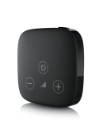
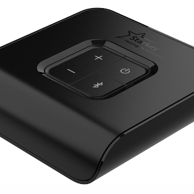
How Can Wireless / Bluetooth Accessories Help?
The Problem:
Mr X spends most of his time at home watching TV or listening to radio, with the occasional visitor or trip to the local shops. He used to be a big fan of ornithology and every first Wednesday of the month he attends a birdwatchers club at a local hall, where they often have speakers giving talks. On Sundays his family take him out to have lunch, or at Christmas and on other special occasions, he joins his extended family of 14 members for dinner. His Plus range hearing aids are only 2 years old and adequate for his day to day life at home but don't work well in the local hall, and will often be poor in restaurants or at Christmas dinner, so he doesn't always feel he's as involved as he'd like to be in these situations. He doesn't always enjoy them, but pretends to his family and friends that he does to prevent upsetting them, or looking silly. He wants to be able to really make the most of the time he spends with his family and friends and enjoy being involved without buying new hearing aids.
The Solution(s):
Mr X could pair his hearing aids with a small multi functional device with advanced technology built into it. The Roger Select iN can be used in busy or noisy places to enable people to hear conversation around their own table, and reduce the surrounding sounds from the environment. This small device could be used as a table mic as above, but could also be used as a TV or radio streamer improving the audio quality of those situations for up to 20-30 metres. Even if he walks away from the sound source to make a cup of tea or go to the toilet, he would still hear it. It can also be used as a remote microphone at the local hall where talk presenters can wear or carry it and their voice would be streamed directly (up to 30 metres) to Mr X's hearing aids, meaning he can hear more and enjoy the talks.
It would boost the performance of his existing hearing aids to improve his hearing and thus his enjoyment of the situations that matter to him such as Sunday lunch, family gatherings and his ornithology club.
Situation Two: Combined home and social use
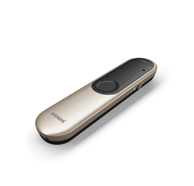
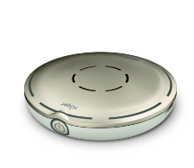
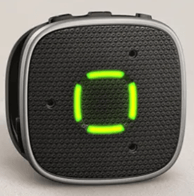





So what are the different types of wireless and bluetooth accessory that can be used with hearing aids and what do they do?
Below you will find a summary of some of the more common wireless devices. Your hearing aid provider should be able to discuss these devices with you and explain how they would benefit your own specific needs and circumstances.
Types of Wireless / Bluetooth Accessory


Smartphone Apps
With advances in technology many hearing aids can now be controlled by an App on a smartphone or iPad/tablet. What controls and adjustments you can make vary from one manufacturer to another but the most commonly used features are volume control, frequency control and program selection. Many Apps also allow the audiologist to make some adjustments remotely, which can be sent to your device and applied via the App.
Manufacturer Apps
Widex Moment App
Unitron Remote Plus App
MyPhonak App
Starkey Thrive App
Oticon On / Companion App
Signia App
Bernafon App
ReSound Smart / Smart 3D App
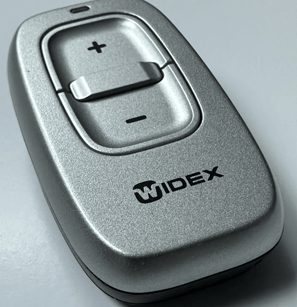

Manufacturer RCs
Remote controls are for people who aren't technologically minded, or perhaps have dexterity issues which prevent them from adjusting their hearing aids manually. They commonly have just 3 buttons for volume up (+), volume down (-) and a program button for changing settings in different environments or selecting additional manual programs with automatic hearing aids
Remote Controls
Widex RC Dex
Unitron Remote Control
Phonak Remote Control
Starkey StarLink/SurfLink RC
Oticon Remote Control 3.0
Signia MiniPocket Remote
Bernafon RC-A Remote Control
ReSound Remote Control 2
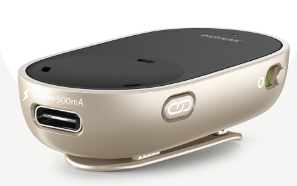

Remote Microphones
Remote microphones are used where someone needs to hear clearly over distance such as in talks, lectures or meetings at long tables. They can also be used if someone is less mobile but needs to hear someone else as they move around the house. The speaker wears the remote microphone (usually clipped onto their clothing) and their voice is streamed directly to the hearing aids over distances of anything up to 25 metres, dependent on the environment barriers such as walls, doors and furniture.
Manufacturer Remote Mics
Phonak Partner Mic
Widex Com-Dex
Starkey Remote Microphone +
Unitron Partner Mic
Oticon Connect Clip / Edu-Clip
Signia Streamline Mic
Bernafon SoundClip-A
ReSound Micro Mic


TV Streamers
Flat screen TVs have 2 inherent flaws. Firstly, the speakers are usually at the back. This means the sound is being sent into the wall, not into the room. Secondly as TV screens have become larger, we are sitting further away from them. A soundbar speaker may overcome the first issue, but doesn't address the second. This is due to the critical listening distance, as explained further up this page.
A TV streamer plugs directly into the back of your TV. Once paired it will play the sound from your TV directly into your hearing aids. Some can be adjusted via a smartphone app and others can be adjusted via the buttons on the streaming device itself. You can set the TV volume at a comfortable level for other people and then adjust the TV connector to your own needs, meaning everyone gets to enjoy watching the TV together again.
Manufacturer TV Streamers
Starkey TV Streamer
ReSound TV Streamer 2
Phonak TV Connector
Widex TV Play / TV Dex
Unitron TV Connector
Oticon TV Adapter 3.0 / 2.0
Signia Streamline TV
Bernafon TV-A
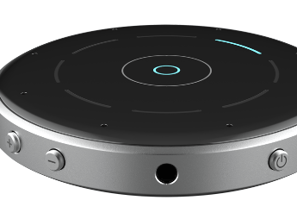

Table Microphones
Table microphones are designed for people who need to hear multiple voices from all directions such as in a meetings.
More recently most manufacturers have moved away from simple table mics and are instead producing multifunctional table mics and other devices which perform a number of different accessory functions .
Starkey Table Microphone
ReSound Multi Mic
Phonak Roger Table Mic
Manufacturer Table Microphones


Multifunction Wireless Accessories
Multifunctional devices are a great way of combining different hearing aid accessories in one small device. Functionality may vary slightly from one manufacturer to another but the most common features are:
A table mic with advanced background noise reduction
A multi media streamer for TVs and computers
a remote microphone for hearing over distance
A partner mic for hearing close to conversations in noisy bars or restaurants
Manufacturer Multifunctional Devices
Widex Sound Assist
Starkey Mini Remote
ReSound Multi Mic
Phonak Roger Select iN II
Phonak Roger On V2